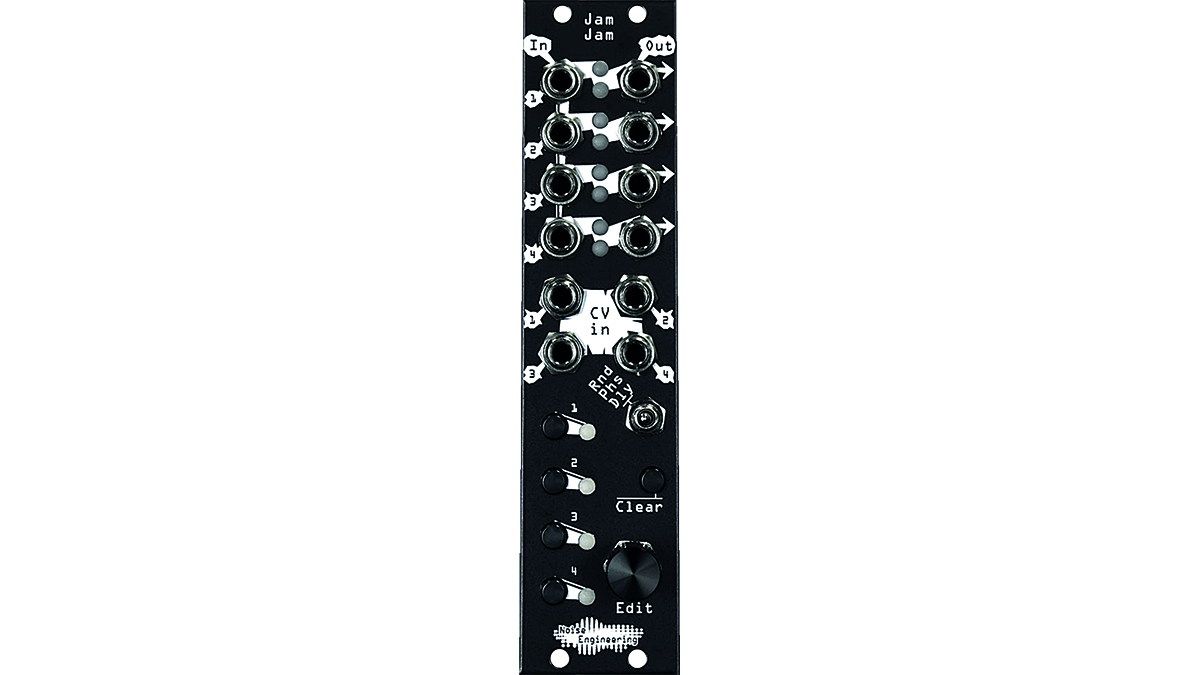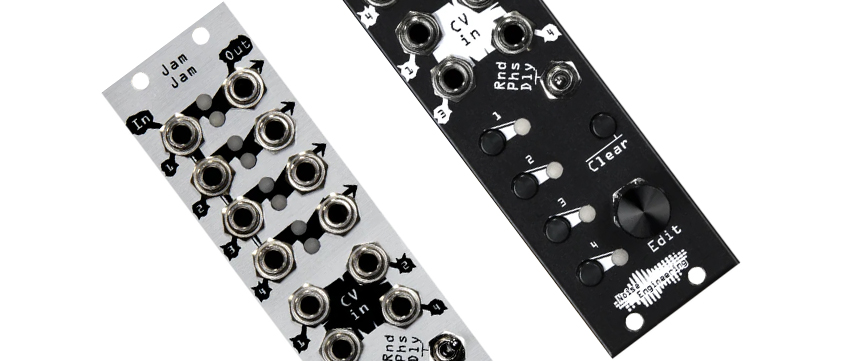MusicRadar Verdict
Jam Jam is a small module with wide functionality that provides an easy way to add organic movement and human-feeling results.
Pros
- +
Clear and easy interface.
- +
Excellent organic results.
- +
Wide functionality.
Cons
- -
Only four channels.
MusicRadar's got your back
Noise Engineering Jam Jam: What is it?
Noise Engineering’s Jam Jam is a trigger, gate and clock processor, which has so many musical uses it surpasses the name utility module. The clearly labelled 6hp module is solidly built, is skiff-friendly at under an inch deep, and the rotary control has a satisfying solidity and click. So, what makes this a standout amongst so many others in this category? Well, in a nutshell it’s the musicality of it. Each of the three modes adds a touch of humanisation to a patch, while keeping it controllable, and the results can be superb.
The top of the module is filled with in, out and CV ports, for each of the four channels. The lower half has switches for the channels, the edit control and a toggle for the modes, which are random, phase and delay.

Noise Engineering Jam Jam: Performance and verdict
The premise is to take incoming triggers, gates, or clocks and adapt them in various ways before they reach their destination. For example, you could patch a trigger sequence into channel one, then use the rotary control (which a click and twist turns into a coarse adjustment) to set a probability. In Rnd mode this will skip gates based on the percentage set. This is a useful ability in itself but add in CV control and things get pretty fun. A simple LFO could be patched to adjust the probability, lending itself to all kinds of results, for beatmaking or organic melodic lines.
Similarly musical is Phs mode which adjusts the phase of incoming clocks yet somehow manages to stay true to the timing, yet again a show of respecting musicality with a human feel. Something that runs throughout the use of Jam Jam.
Dly mode is similarly basic in use but sophisticated and natural in result. This is a simple trigger delay but, as there are four channels to play with, you can do some interesting things, such as delaying each channel, feeding a multivoice VCO (or different voices/sound sources) to create arpeggiations. Feed in some CV control and the resulting triggers can give the feel of anything from a fast strum of a stringed instrument, to a long slow arp, with timings from 5ms to 15 seconds available.
Another useful feature is that the channels are normalled, so you can use one input to feed all four channels. The normalising is broken by patching another channel.
The four small buttons are used to define which channel, or channels, are being affected by the edit knob. It’s a really intuitive control system and adds to the speed in which a natural-feeling patch can be made. The learning curve is almost non-existent, making this a plug in and win module for anybody looking to adapt triggers, clocks and gates.
MusicRadar verdict: Jam Jam is a small module with wide functionality that provides an easy way to add organic movement and human-feeling results.
Noise Engineering Jam Jam: Hands-on demos
Noise Engineering
Noise Engineering Jam Jam: Specifications
- KEY FEATURES I/O: Phase, delay and random modes, Four channels of in and out, CV for each channel.
- CONTACT: Noise Engineering
“If they were ever going to do the story of Nero, probably the most decadent of all the emperors, they would have to use Roy Thomas Baker”: A tribute to the legendary producer of Queen, Alice Cooper, Journey and more
“Built from the same sacred stash of NOS silicon transistors and germanium diodes, giving it the soul – and snarl – of the original”: An octave-fuzz cult classic returns as Jam Pedals resurrects the Octaurus
What’s the buzz? Meet Yellowjacket, Cherry Audio's recreation of EDP’s trend-setting Wasp from 1978










